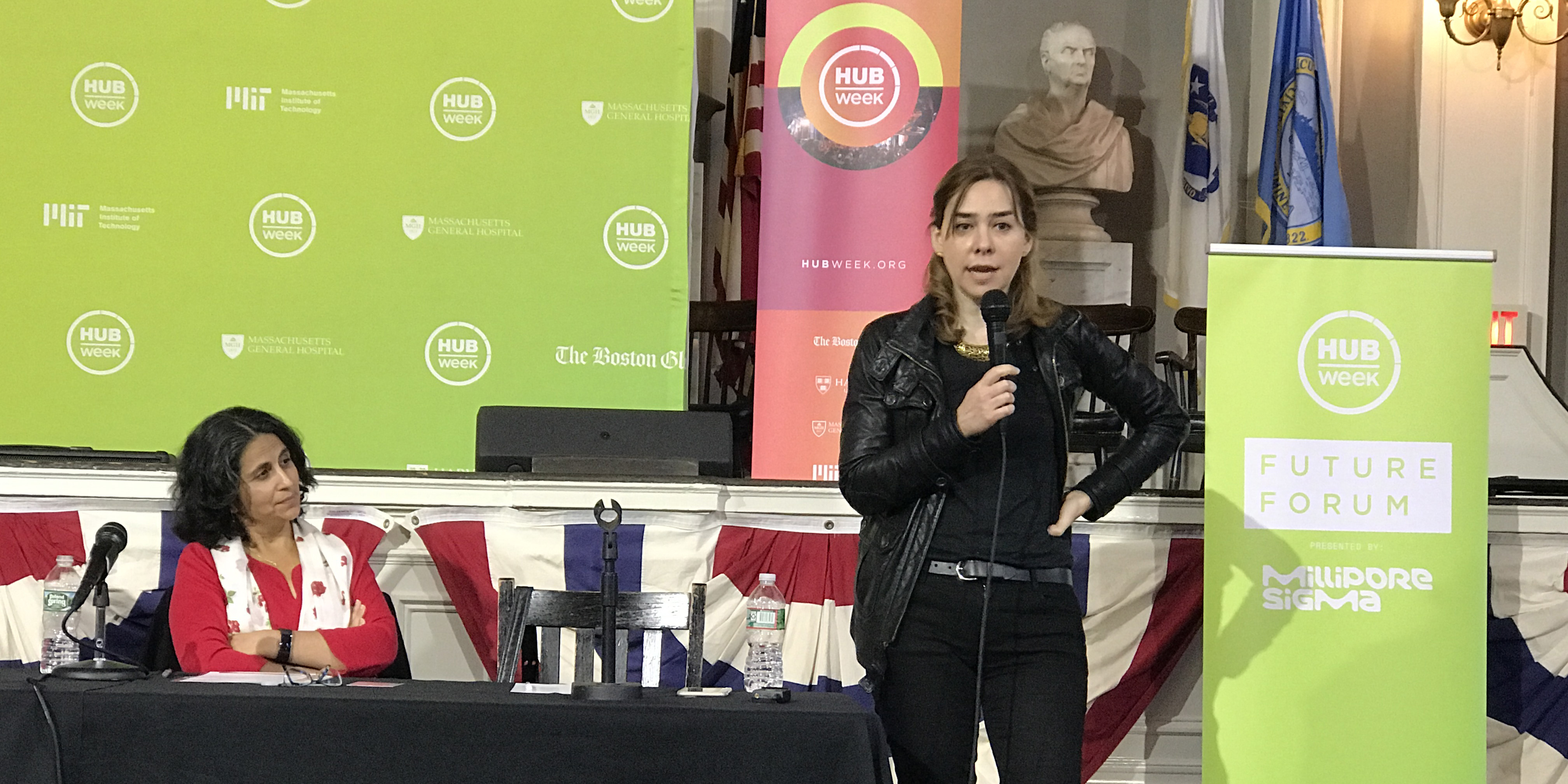AI to Shape the Future of Medicine?
-
-
Slice of MIT
Filed Under
Recommended

At Boston’s HUBweek session on Artificial Intelligence in Medicine, practitioners—including two MIT alumnae—shared some challenges and opportunities. The October 12 session explored how AI and deep learning are transforming the practice of medicine by helping clinicians diagnose and treat problems more quickly and accurately.

As medical institutions crunch more data on illness and outcomes, they are benefiting from computer science innovations and a growing staff of data scientists. The open source movement has freely shared innovations that can be adopted by nonprofits. Big data strategies are essential to making sense of the massive amounts of information collected through medical imaging and records. And lots of buzz surrounds the term “deep learning,” an AI approach that aims to build self-teaching systems.
The rapid improvements in medical imaging are evident to Tina Kapur SM ’95, PhD ’99, who is executive director of the Ferenc Jolesz National Center for Image Guided Therapy in the Department of Radiology at Brigham and Women's Hospital and Harvard Medical School.
Funded by the National Institute of Biomedical Imaging and Bioengineering, this center aims to use imaging and technology to improve outcomes in surgery and other interventions—and to bring these discoveries into widespread clinical use. Brain imaging, for example, now provides vital information that allows surgeons to safely remove more cancerous tissue at the margins of tumors, a practice that lowers the chance of recurrence. Surgeons can get pathology results on biopsies almost instantly.
Prostate cancer, a widespread condition that is often overtreated and sometimes undertreated, is another area where more knowledge can make a difference, says Kapur.
“Clinical trials done over the last ten years have shown that we are over treating in some cases, and missing aggressive cancers in others,” Kapur says. “It is my hope that, with deep learning in our toolbox, we will be able to hone in on the patterns of prostate cancer that need to be treated, versus the ones where the treatment will cause more aggravation than the disease.”
AI can improve medical care in two ways, says Dina Katabi SM ’99, PhD ’03, the Andrew and Erna Viterbi Professor of Electrical Engineering and Computer Science who is the director of the MIT’s Center for Wireless Networks and Mobile Computing and a recipient of the MacArthur genius award. The first is to use machines to extract information from images or medical records in a way similar to physicians—just faster. The second is to identify symptoms or visual clues that humans cannot perceive, such as discerning discrete textures in tissue samples that are not visible to the human eye.

Katabi’s own research goes a step further. She uses low-power radio waves similar to wifi to detect physiological signals in people without any devices attached to their bodies. Projects include tracking the movement of people throughout a house, which can reveal if an elderly person has fallen or has experienced a change in a medical condition such as degradation in mobility or the ability to perform daily activities like dressing and eating. She has also developed a machine learning algorithm that produces the same output as a sleep test but without any sensors on patients.
“Most of the cost of healthcare is associated with chronic diseases and, often, older adults,” Katabi says. “Being able to continuously monitor changes in health conditions allows for early intervention and can help in avoiding hospitalization.”
For the future, Kapur hopes every radiologist will have access to the best-in-class AI systems to consult with while they make diagnoses. “We already have an AI doctor—it’s Google. We all consult it before, after, and sometimes, during the visit with our white-coat doctors. The healthcare industry is now trying to figure out how to incorporate such AI consults more systematically into the system. One of the biggest infrastructure changes that we will see over the next few years will be that every hospital will figure out how to collect and curate data in a much more systematic way so that they can leverage supervised learning-based AI systems for the benefit of their patients. This will make healthcare much more data driven.”
Innovations in care management and aging-in-place are the biggest needs in the US, Katabi says. “The fastest-growing segment of the population is people over 85. Unless we figure out a way to use machines to automate care in the home, we really have an essential problem.”
And how has MIT helped prepare these practitioners for big challenges?
“MIT has given me the confidence to take on challenges where I can not even see the tunnel, let alone any light at the end," says Kapur, “and for that I will be forever grateful.”
Katabi has a similar take. “As a student at MIT, then a faculty member, I learned to think big, take risks, work on what I like, and always be a geek,” says Katabi. “I think it paid off.”
MIT is a founder of HUBweek, an annual civic collaboration held in the Greater Boston area that presents innovations in art, science, and technology through some 175 events.







